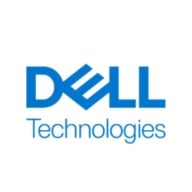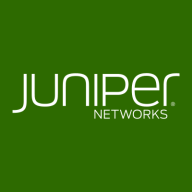

Dell PowerEdge R-Series servers and Juniper QFX Series Switches serve distinct purposes in IT infrastructure. While both have their strengths, Juniper's feature set is often seen as superior, particularly for network scalability with EVPN-VXLAN, suggesting it has the upper hand feature-wise.
Features: Dell PowerEdge R-Series excels in scalability, ease of upgrades, and remote management with iDRAC. It's known for reliability due to advanced management tools, providing a robust and manageable solution. Juniper QFX Series Switches stand out with high port density and superior performance enhanced by Broadcom chipsets, offering significant EVPN-VXLAN flexibility for scalable network designs.
Room for Improvement: Dell PowerEdge R-Series could improve by reducing support response times, enhancing thermal design, and offering better centralized management and security. The documentation and speed of model development also lag. Juniper QFX Series could benefit from a more user-friendly interface, improved scalability, and easier integration. Adjusted pricing and dedicated fiber connectivity offerings could broaden market appeal.
Ease of Deployment and Customer Service: Both Dell and Juniper products are primarily on-premises. Dell PowerEdge R-Series is praised for its robust technical support, proactive service, and high customer service rankings. Juniper QFX Series has dependable support, although its availability and response times could be improved.
Pricing and ROI: Dell PowerEdge R-Series servers are viewed as competitive in price, offering substantial ROI through operational stability and reduced support needs. Their transparent pricing and flexible options cater to various business needs. Juniper QFX Series, while perceived as costly, delivers long-term value and performance. OEM relationships heavily influence pricing, offering potential discounts to partners.
By not having to worry about it, I would estimate we save two to four hours a week, depending on what's happening, such as if we need to spin up a new server, which would contribute to more time if done the old way.
In my immediate case for antenna analysis, Dell PowerEdge Rack Servers offer a reduction from days of computing to half a day or hours.
The value of uptime to us is critical.
The normal ROI customers work with is five years unless there is a major change in technology.
It has always been scheduled maintenance, which says a lot for a production environment, as we haven't had to call in a trouble ticket for the actual hardware during its entire run.
Typically, the contacts we have on-site are very knowledgeable, they come in within a day and usually have it fixed and taken care of if there are issues.
When we had a power supply failure out of the box, we called support, and they delivered the replacement within four hours as promised.
Sometimes parts are not available in stock, then you have to wait for replacement time.
The scalability of Dell PowerEdge Rack Servers is excellent.
Any outages or blackouts are limited to particular servers, not affecting the whole chassis or enclosures.
We bought our product with scaling involved, and we've been scaling it up anytime we've needed more storage.
When building a fabric, you can add multiple leaf switches and multiple spine switches if required.
Over four years, we've had less than 1 percent downtime.
There is a feature to update the server while it is running, so there is no need to restart.
We have truly not had any downtime on the infrastructure at all.
Juniper has better performance than any other networking product as far as performance is concerned in the router area.
We need to know about any upcoming updates so that we can plan accordingly.
The beneficial aspect of that feature was that we could skip the PowerStore and just have the Dell PowerEdge Rack Servers alone, as they also served as storage, which helped us save money.
This forces you to go up to a larger server to get the desired processor, which increases the cost.
My personal opinion is that if anyone wants to work with a Layer 3 fabric in a data center, they should choose Juniper because working with ACI and APIC is very complex in the Cisco part.
They have been stable and running for years without performance downtime or significant disc failures.
Some customers find it cheaper due to contractual agreements, while others find it expensive, especially when scaling up.
The software associated with servers, like VMware subscription licenses, drives costs.
We are a number one, tier-one partner of Juniper. Therefore, we normally get better discounts than with Cisco because we don't have the level one partnership with Cisco.
They keep running for at least five to seven years without any issues.
With PowerEdge Servers, I don't need a one-to-one ratio redundancy, which leads to about eighty percent downtime reduction.
One of the valuable features is Active Directory, which helps in managing the network.
They are easy to use and flexible to deploy in any kind of environment.
| Product | Market Share (%) |
|---|---|
| Juniper QFX Series Switches | 13.9% |
| Dell PowerEdge R-Series | 1.4% |
| Other | 84.7% |


| Company Size | Count |
|---|---|
| Small Business | 78 |
| Midsize Enterprise | 52 |
| Large Enterprise | 89 |
| Company Size | Count |
|---|---|
| Small Business | 4 |
| Midsize Enterprise | 1 |
| Large Enterprise | 2 |
PowerEdge R-Series delivers high performance, flexibility, and scalability for data centers. It supports demanding tasks with robust management tools and advanced cooling, providing reliability and efficiency across various workloads.
Engineered for large deployments, PowerEdge R-Series supports extensive configurations optimizing performance in data centers. With features like advanced cooling and energy-efficient architecture, it empowers organizations to manage heavy workloads while facilitating seamless scalability. It offers remote management, robust security, and integration with VMware ensuring operational excellence and high availability for business-critical applications.
What are the key features of Dell PowerEdge R-Series?PowerEdge R-Series is deployed across industries for virtualization, database hosting, and application servers. It supports environments like VMware and Hyper-V for AI, cloud infrastructure, and computing tasks. Widely used by finance, healthcare, and academia, it enhances reliability and efficiency of IT infrastructure.
QFX Series Switches deliver industry-leading throughput and scalability, an extensive routing stack, the open programmability of the Junos OS, and a broad set of EVPN-VXLAN and IP fabric capabilities. With QFX, you’ll find premier solutions for data center spine-and-leaf, campus distribution, core, and data center gateway and interconnect switching.
Rethink data center operations and fabric management with turnkey Juniper Apstra software in your QFX Series environment. You can automate the entire network lifecycle to simplify design and deployment and provide closed-loop assurance. With Apstra, customers have achieved 90% faster time to deployment, 70% faster time to resolution, and 83% OpEx reduction.
We monitor all Data Center Networking reviews to prevent fraudulent reviews and keep review quality high. We do not post reviews by company employees or direct competitors. We validate each review for authenticity via cross-reference with LinkedIn, and personal follow-up with the reviewer when necessary.